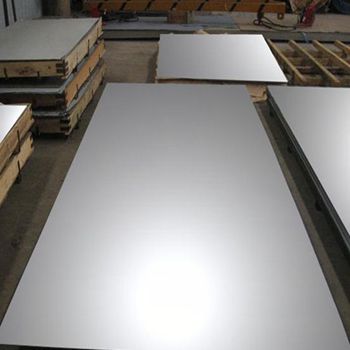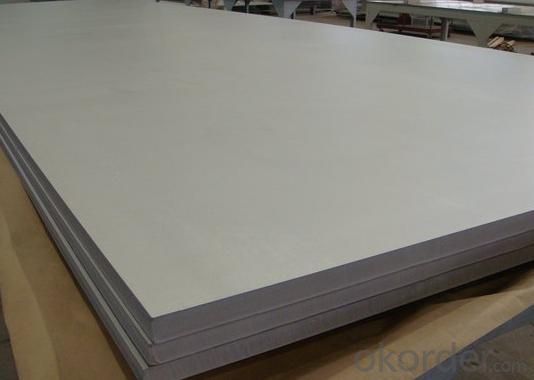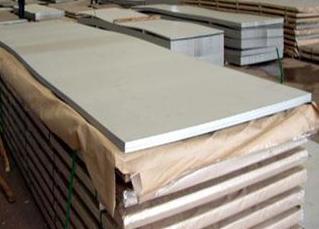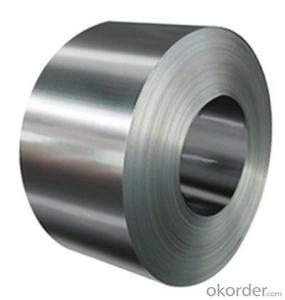AISI 201 Stainless Steel Sheet
- Loading Port:
- China Main Port
- Payment Terms:
- TT or LC
- Min Order Qty:
- 1 Ton m.t.
- Supply Capability:
- 1000 Tons Per Month m.t./month
OKorder Service Pledge
OKorder Financial Service
You Might Also Like
AISI 201 Stainless steel sheet
1. Chemical composition
|
C |
Si |
Mn |
P |
S |
Ni |
Cr |
|
max0.15 |
max1.00 |
5.50-7.50 |
max0.06 |
max0.03 |
max1.00 |
16.00-18.00 |
2. Mechanical properties
|
Yield Strength |
Tensile |
Elongation |
Hardness (HV) |
Hardness (HRB) |
|
245 |
640 |
40 |
253 |
100 |
3. Standard: AISI, ASTM, GB, EN, DIN, JIS
4. Surface: 2B, NO.1, BA, NO.4, Hairline, SB, Mirror finish, Anti-skid, Cherkered etc.
5. Size: Thickness: 0.3-3mm (cold rolled), 3-40mm (hot rolled)
Width: 1000mm or 1219mm or 1240mm for cold rolled, 1500mm for hot rolled.
Length: As customers' request.
6. MOQ: 1 Ton
7. Payment terms:T/T or L/C
8. Packing: Seaworthy package with wooden or Iron pallets with the paper and the steel strip, or as customers' request.
9. Delivery time: Usually about 7 days after we confirming the order, or according to your quantity.
If you have any question or demand, pls feel free to contact me.


- Q: Are stainless steel strips non-magnetic?
- No, stainless steel strips are not inherently non-magnetic. The magnetic properties of stainless steel strips depend on the specific composition and processing methods used in their production. Some stainless steel alloys can be magnetic, while others are non-magnetic.
- Q: What are the factors affecting the thermal expansion of 111 stainless steel strips?
- The thermal expansion of 111 stainless steel strips can be affected by various factors. 1. Composition: The presence of alloying elements like nickel and chromium in the stainless steel composition can impact its thermal expansion behavior. Different compositions can result in varying rates of expansion when exposed to temperature changes. 2. Temperature range: The range of temperatures to which the stainless steel strips are exposed can significantly influence their thermal expansion. Higher temperatures generally cause materials to expand more, while lower temperatures can lead to contraction. The specific temperature range in which the strips are used or exposed determines their thermal expansion characteristics. 3. Heat treatment: The thermal expansion of the stainless steel strips can also be influenced by the heat treatment process applied to them. Different heat treatment methods, such as annealing or quenching, can alter the microstructure and crystal lattice of the steel, affecting its thermal expansion properties. 4. Grain size: The grain size of the stainless steel can impact its thermal expansion behavior. Smaller grain sizes typically result in lower thermal expansion coefficients, while larger grain sizes can lead to higher coefficients. Factors like the manufacturing process and heat treatment can influence the grain size. 5. Surface finish: The thermal expansion of the stainless steel strips can also be affected by their surface finish. Different surface finishes, such as polished or rough surfaces, can alter the thermal expansion characteristics by influencing the material's heat transfer ability. 6. Presence of impurities: The thermal expansion behavior of the stainless steel can be influenced by the presence of impurities or foreign elements. Impurities can disrupt the crystal lattice structure and introduce defects, which can impact the material's thermal expansion properties. 7. Mechanical stress: Mechanical stress, whether applied externally or generated internally during manufacturing processes, can influence the thermal expansion behavior of the stainless steel strips. Mechanical stress can cause changes in the material's crystal structure and affect its ability to uniformly expand or contract. Considering these factors is crucial when designing and selecting stainless steel strips for applications where thermal expansion characteristics are critical. By understanding and accounting for these factors, engineers can ensure optimal performance of the stainless steel strips under varying temperature conditions.
- Q: Can stainless steel strips be used in the production of electrical connectors?
- Yes, stainless steel strips can be used in the production of electrical connectors. Stainless steel is a highly versatile material that offers excellent mechanical properties, such as high strength, durability, and corrosion resistance. These qualities make it suitable for various applications, including electrical connectors. Stainless steel strips can be fabricated into precise shapes and sizes, allowing for the production of connectors with tight tolerances. Additionally, stainless steel's resistance to oxidation and corrosion ensures the longevity and reliability of the connectors, even in harsh environments. Overall, stainless steel strips are a viable material choice for the production of electrical connectors.
- Q: Can 111 stainless steel strips be stamped or embossed for decorative purposes?
- Yes, 111 stainless steel strips can be stamped or embossed for decorative purposes.
- Q: Can stainless steel strips be used in automotive exhaust systems?
- Yes, stainless steel strips can be used in automotive exhaust systems. Stainless steel is a popular material choice for exhaust systems due to its high corrosion resistance and durability. It can withstand extreme temperatures and harsh conditions, making it suitable for the exhaust system's demanding environment. Stainless steel strips are often used for the construction of exhaust pipes, mufflers, and other components due to their strength and ability to resist rust and corrosion. Additionally, stainless steel strips can be easily formed, welded, and shaped to meet the specific requirements of an exhaust system, making them an ideal choice for automotive applications.
- Q: What are the recommended safety guidelines for cutting 111 stainless steel strips?
- When cutting 111 stainless steel strips, it is important to follow recommended safety guidelines to minimize the risk of injury. Here are some guidelines that are commonly recommended: 1. Personal Protective Equipment (PPE): Always wear appropriate PPE such as safety glasses or goggles to protect your eyes from flying debris, and gloves to protect your hands from sharp edges or potential cuts. 2. Use the Right Tools: Ensure that you are using the correct cutting tool for stainless steel strips. This could include tools like a metal cutting circular saw or a plasma cutter. Make sure the tool is in good condition and properly maintained. 3. Secure the Material: Secure the stainless steel strip properly before cutting to prevent movement or slipping during the process. This can be achieved by using clamps or a vise to hold the strip securely in place. 4. Clear the Work Area: Ensure that the work area is clean and free of any obstructions or hazards that could cause accidents. Remove any loose objects or debris that could interfere with the cutting process. 5. Follow Proper Technique: When cutting, use a steady and controlled motion to prevent the tool from binding or jumping. Always cut away from your body and avoid any sudden movements that may result in injury. 6. Watch for Heat Build-up: Cutting stainless steel can generate a significant amount of heat. Be cautious of this heat build-up and avoid touching the material immediately after cutting to prevent burns. 7. Allow for Cooling: After cutting, allow the stainless steel strip to cool down before handling it further. This will reduce the risk of burns and ensure safe handling. 8. Proper Disposal of Waste: Dispose of any waste material, such as scraps or cuttings, in appropriate containers or designated areas to prevent accidents or injuries. It is important to note that these guidelines may vary depending on the specific cutting method and equipment being used. Always refer to the manufacturer's instructions and seek professional advice if necessary to ensure the highest level of safety when cutting stainless steel strips.
- Q: What are the different sizes available for stainless steel strips?
- A variety of sizes are offered for stainless steel strips to accommodate different applications and needs. Typically, the width of these strips can range from 0.25 inches (6.35 mm) to 24 inches (609.6 mm). The thickness, also known as gauge, can vary from 0.001 inches (0.0254 mm) to 0.250 inches (6.35 mm). These sizes are provided to meet the demands of various industries and purposes. Smaller and thinner stainless steel strips are commonly utilized in electronic components, medical devices, and precision instruments that require a high level of accuracy and precision. On the other hand, larger and thicker stainless steel strips are frequently used in construction, automotive manufacturing, and industrial applications that require strength and durability. It is worth noting that these sizes are not exhaustive and may differ depending on the manufacturer and specific requirements of customers. Custom sizes may also be available upon request to satisfy unique project needs.
- Q: How do stainless steel strips handle thermal expansion and contraction?
- The remarkable ability of stainless steel strips to handle thermal expansion and contraction is well-known. This is due to stainless steel's highly stable and resilient nature, which enables it to withstand significant temperature changes without distortion or damage. Stainless steel strips gradually and uniformly expand when exposed to heat, allowing them to maintain their shape and structural integrity. This expansion is relatively minimal compared to other metals, reducing the risk of warping or buckling. Similarly, when subjected to cold temperatures, stainless steel strips contract evenly, ensuring they can adapt to changing conditions without compromising their strength. The outstanding thermal expansion and contraction properties of stainless steel strips make them suitable for various applications, especially those involving temperature fluctuations. Industries such as construction, automotive, aerospace, and manufacturing commonly use stainless steel for structural components, fasteners, and heat exchangers. However, it is important to note that while stainless steel is highly resistant to thermal expansion and contraction, it is not entirely immune to extreme temperature changes. Proper engineering and design considerations should always be taken into account to optimize the material's performance and minimize potential issues.
- Q: Can stainless steel strips be used in high-temperature environments?
- Indeed, one can utilize stainless steel strips in environments with elevated temperatures. Stainless steel exhibits remarkable heat resistance properties, rendering it ideal for scenarios that entail exposure to extreme temperatures. The extent of its heat resistance relies on the particular grade of stainless steel employed and the temperature range involved. Nonetheless, the majority of stainless steel grades can endure temperatures of up to 1000°C (1832°F) without compromising their mechanical attributes. Moreover, stainless steel's capacity to thwart oxidation and corrosion further enhances its aptness for high-temperature settings.
- Q: What are the dimensions and thickness ranges available in 111 stainless steel strips?
- The dimensions and thickness ranges available in 111 stainless steel strips vary depending on the manufacturer and supplier. However, commonly available options for 111 stainless steel strips include dimensions ranging from 0.1mm to 3.0mm in thickness and widths ranging from 10mm to 600mm. It is important to consult with the specific manufacturer or supplier to determine the exact dimensions and thickness ranges they offer for 111 stainless steel strips.
Send your message to us
AISI 201 Stainless Steel Sheet
- Loading Port:
- China Main Port
- Payment Terms:
- TT or LC
- Min Order Qty:
- 1 Ton m.t.
- Supply Capability:
- 1000 Tons Per Month m.t./month
OKorder Service Pledge
OKorder Financial Service
Similar products
Hot products
Hot Searches
Related keywords




























